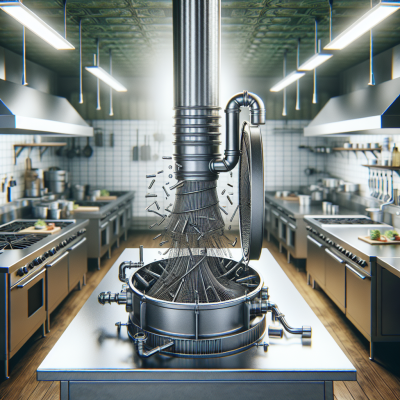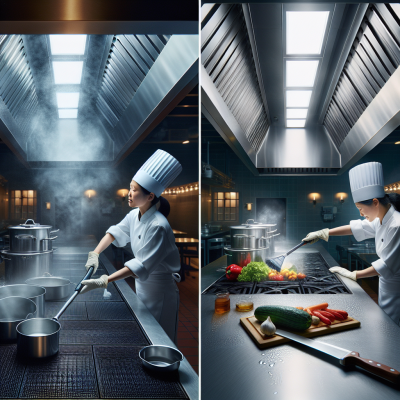Boosting Efficiency: The Secret Power of Clean Hoods
In the bustling world of gastronomy, efficiency is king. For restaurant owners, every pan flip, dish swirl, and plate presentation has a direct impact on their bottom line. Yet, beneath the sizzling pans and behind the twirling spatulas, there is an often-overlooked hero of culinary efficiency — the restaurant hood.
The Role of Restaurant Hood Cleaning in Energy Efficiency
Restaurant hoods are marvels of culinary engineering, tirelessly working to ensure chefs can breathe easy and diners enjoy their exquisite meals in a smoke-free atmosphere. These guardians of air quality, however, need regular attention to maintain their efficiency. A clean hood can drastically reduce energy costs and improve the overall efficiency of a commercial kitchen.
But why is commercial kitchen hood cleaning so critical? Simply put, a buildup of grease and dust can stifle your hood’s performance, forcing it to work harder and longer than necessary. This not only jacks up your energy bills but also shortens the lifespan of your exhausts.
Key Benefits of Regular Hood Cleaning
- Improved Airflow: Cleaner hoods ensure that air flows more freely, which helps in maintaining an optimal kitchen environment.
- Lower Energy Costs: Reduced energy consumption due to less stress on ventilation systems.
- Enhanced Safety: Reduced risk of grease fires, protecting both staff and infrastructure.
- Prolonged Equipment Life: Regular cleaning keeps kitchen equipment in peak condition, extending their operational lifespan.
Reducing Your Carbon Footprint
Being energy-efficient isn’t just about saving money—it’s also about reducing your carbon footprint. Clean hoods play a crucial role in ensuring that your kitchen operates sustainably. Less energy-intensive equipment equals a more eco-friendly operation, a trait increasingly valued by today’s environmentally-conscious diners.
Charlotte: A Hub of Culinary Excellence
Charlotte is home to a diverse and vibrant food scene, where culinary dreams come to life through a fusion of flavors and innovations. It’s no wonder that exhaust hood cleaning in Charlotte is a vital service, helping countless restaurants maintain their prestige and commitment to quality.
The Process of Hood Cleaning
Understanding the process of exhaust hood cleaning can demystify its importance. Here’s how it typically unfolds:
- Inspection: Each cleaning service begins with a thorough inspection to assess the condition and cleaning needs of the hood system.
- Preparation: The surrounding kitchen areas are covered to protect them from the inevitable splashes of grease and cleaning agents.
- Grease Removal: Using industrial-grade cleaners and power washers, accumulated grease is blasted away from the hood, ducts, and fans.
- Detailing: Final touches involve meticulous cleaning of the hood’s exterior and polishing any stainless steel surfaces.
- Post-Cleaning Audit: A follow-up examination ensures all components are pristine and functioning optimally.
DIY or Professional Cleaning – Making the Right Choice
While the DIY spirit is admirable, restaurant hood cleaning isn’t suited for amateur efforts. The complexity and scope of the task, not to mention fire safety considerations, necessitate professional intervention. Trained technicians not only bring expertise but also adhere to local regulations and safety standards.
Final Thoughts
A kitchen without clean hoods is like a restaurant without running water — it’s simply unsustainable. For restaurant owners aiming to maximize efficiency, regular hood maintenance is non-negotiable. It’s an investment that pays for itself over time, through reduced energy bills, longer equipment lifespans, and a safer kitchen environment.
In the end, embracing the synergy of hood cleaning and energy efficiency isn’t just good business sense—it’s a commitment to sustainability, safety, and culinary excellence. If you operate a restaurant in Charlotte or surrounding areas, consider tapping into professional services for restaurant hood cleaning to keep your operation running smoothly.










